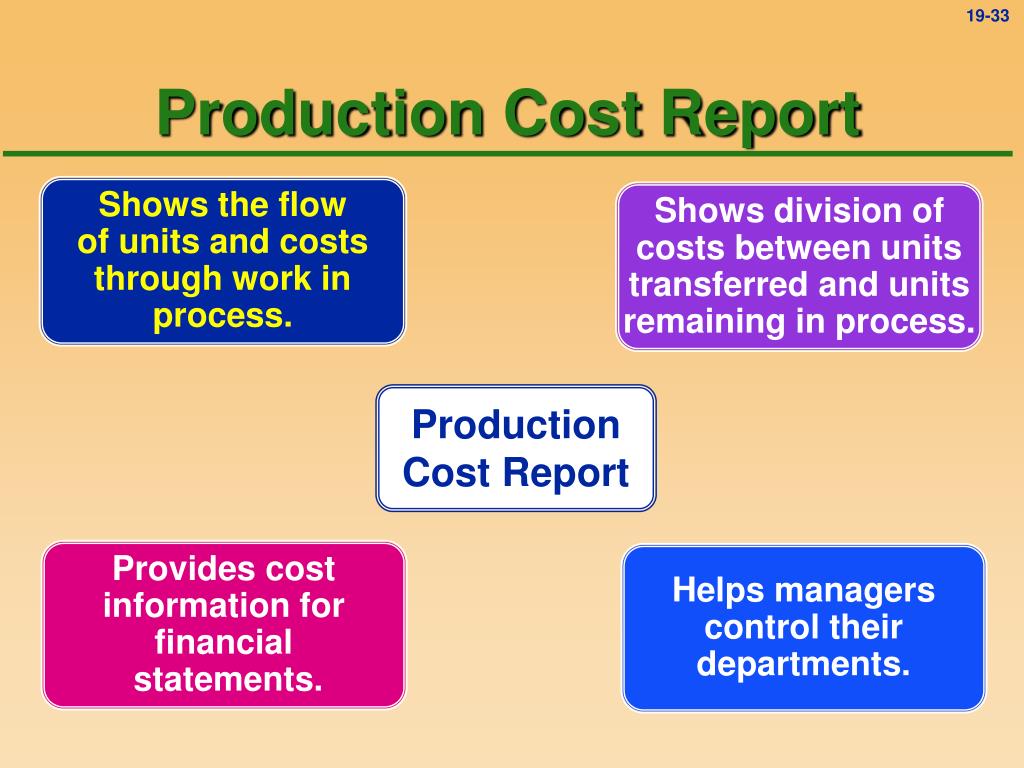
Finance Strategists is a leading financial literacy non-profit organization priding itself on providing accurate and reliable financial information to millions of readers each year. Our team of reviewers are established professionals with decades of experience in areas of personal finance and hold many advanced degrees and certifications. If you still have questions or prefer to get help directly from an agent, please submit a request. A costing method used where similar items are produced continuously, assigning costs equally across all units. A Total costs to beaccounted for (step 2) must equal total costs accounted for (step4). From the auditor’s viewpoint, proper allocation is crucial for accurate financial reporting.
Gathering Cost Data

By dissecting this information, companies can pinpoint areas of inefficiency, identify opportunities for cost reduction, and optimize their resource allocation. Moreover, understanding the cost of production is essential for pricing strategies, ensuring that products are competitively priced while still generating a profit. Understanding the cost of goods manufactured (COGM) is a critical aspect of managing a manufacturing business. It represents the total cost incurred to produce products that are ready for sale during a specific period.
Google Pixel 9 Pro costs around Rs 34,000 to manufacture, says a report
- For example, negotiating better rates for raw materials or investing in more efficient machinery can lower cogs and improve profit margins.
- Each month, the data at the top are changed to reflectthe current month’s activity, and the production cost report takescare of itself.
- By analyzing WIP Inventory, manufacturers can gain a clearer picture of their cost of production, identify areas for improvement, and better manage their resources.
In this section, we will discuss some of the best practices for cost reporting, based on the insights from different stakeholders, such as project managers, accountants, clients, and auditors. We will also provide some examples of how to apply these best practices in real-world scenarios. Before collecting any cost data, it is essential to clarify the scope and purpose of the cost report. This will help to determine what type of cost data is needed, how much detail is required, and what time period is covered.
Analyzing Cost Data
It is also important to backup and archive the cost data regularly, to prevent data loss or damage. Once the relevant cost categories and subcategories are identified, the next step is to collect the cost data from reliable and verifiable sources. Reliable sources are those that provide accurate and complete information that can be trusted and relied upon.
The production costreport summarizes the production and cost activity within aprocessing department for a reporting period. Rounding the cost perequivalent unit to the nearest thousandth will minimize roundingdifferences when reconciling costs to be accounted for in step 2with costs accounted for in step 4. When using information from the production cost report, managersmust be careful not to assume that all production costs arevariable costs. The CEO of Desk Products, Inc., Ann Watkins, wastold that the Assembly department cost for each desk totaled $62for the month of May (from Figure 4.9, step 3).
What is a work-in-process inventory?
It includes the cost of raw materials, labor, and overhead expenses incurred for products that are not yet complete. The valuation of WIP Inventory can be complex, as it must reflect the true cost of production at any given time. The cost of production report is a financial statement that summarizes the total cost of manufacturing a product or service during a specific period. It provides detailed information about the different cost components involved in the production process, including both direct and indirect costs. The company should calculate the number of unit produced at the end of the manufacturing process to determine the per unit cost incurred by the company. However it is recommended to use job order costing for more than one product.
The interplay of these factors underscores the importance of a holistic approach to understanding and managing production costs in the manufacturing sector. A cost of production report is a document used by manufacturers to calculate the cost of producing goods during a specific period. This report is used to determine the cost of times interest earned tie ratio formula calculator goods sold and to determine the value of inventory. The cost of production report is commonly used in process costing systems where goods are produced through a series of processes and not produced individually. A cost report is not a static document, but a dynamic one that reflects the current status and progress of the project.
By dissecting COGS, stakeholders can glean insights into the efficiency of production, the pricing strategy, and ultimately, the profitability of the products. It’s not just a line item on the income statement; it’s a window into the operational heartbeat of a company. Understanding the role of the cost of production in manufacturing is pivotal for any business aiming to maintain a competitive edge in the market. The cost of production encompasses all expenses incurred to bring a product to market, including raw materials, labor, and overhead.
Job-order costing is used when there is production of a variety of products or for one time jobs. This system records costs at the time they are incurred and it is easier to have control over the job. One of the most important aspects of cost reporting is interpreting the metrics that show how your project is performing.
